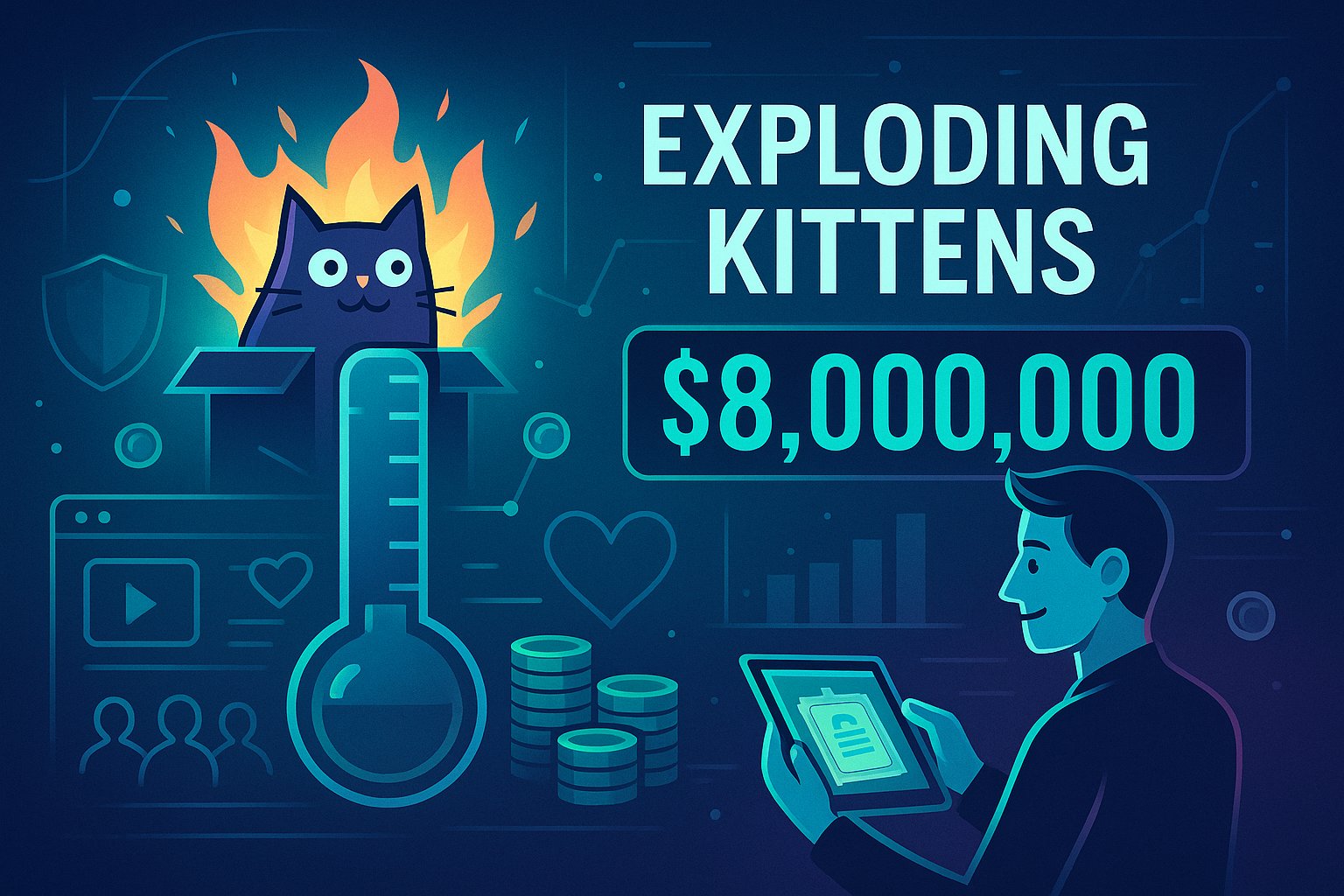Navigating the Crowdfunding Maze: Steering Clear of Common Pitfalls
Crowdfunding has revolutionized how innovators, creators, and entrepreneurs bring their visions to life. Yet, amid the excitement of launching a campaign, many fall prey to avoidable blunders that derail fundraising efforts. From underestimating the power of storytelling to neglecting backer communication, these missteps can leave even the most promising projects stranded below their funding goals. In this comprehensive guide, we delve into the top ten crowdfunding mistakes—each illustrated with real-world context—and equip you with practical strategies to sidestep them. Whether you’re an established creator or a first-time fundraiser, understanding these pitfalls will help you craft a campaign that not only reaches its target but builds a community of passionate supporters along the way.
#1: Ignoring Pre-Launch Preparation: The Blueprint You Can’t Overlook
Launching without meticulous pre-launch planning is like setting sail without a map. Far too many campaigns go live on impulse, relying on hope rather than strategy. A successful crowdfunding initiative demands a solid foundation: clear goals, a defined target audience, and a robust marketing plan. First, establish realistic funding milestones based on careful cost analysis—accounting for production, fulfillment, taxes, and platform fees. Next, develop a pre-launch marketing funnel: collect emails via a simple landing page, tease exclusive previews on social media, and cultivate partnerships with influencers in your niche. By building an engaged audience before the official launch, you secure early momentum, which in turn signals algorithms and potential backers that your project is worth attention. In essence, pre-launch preparation transforms random clicks into committed pledges.
#2: Underestimating the Art of Storytelling: Beyond Features and Specs
Technical specifications and bullet-point lists rarely ignite the emotional spark necessary for pledges. Instead, the heart of any campaign lies in compelling storytelling that weaves your project’s purpose, journey, and impact into a memorable narrative. Describe the moment that inspired your idea, share challenges you’ve overcome, and humanize the team driving the venture. Incorporate multimedia elements—behind-the-scenes clips, candid founder interviews, and progress snapshots—to bring authenticity to your message. When potential backers see themselves reflected in your story—whether as beneficiaries, collaborators, or visionaries—they’re far more inclined to convert. In short, shifting the focus from “what” you’re building to “why” you’re building it elevates your campaign from a mere transaction to a shared mission.
#3: Mispricing Reward Tiers: Striking the Balance Between Value and Viability
Rewards are the currency of gratitude in reward-based crowdfunding, yet many creators misjudge their value. Overly generous perks can erode margins and lead to financial shortfalls, while underwhelming tiers fail to entice backers. The ideal reward structure offers a spectrum of options: entry-level tokens of appreciation at accessible price points, mid-tier collectibles that showcase your product’s uniqueness, and premium experiences for your biggest supporters. Conduct market research to gauge what comparable campaigns offered and at what price points they performed best. Factor in production costs, shipping fees, and potential customs duties to ensure each tier remains profitable. Clear descriptions and mockup visuals further help backers understand exactly what they’ll receive. When reward tiers marry perceived value with sustainable economics, campaigns strike a balance that drives both participation and solvency.
#4: Neglecting Ongoing Backer Engagement: The Conversation That Never Ends
Too many campaigns treat backers as one-time transactions rather than long-term community members. Silence after pledging breeds frustration and erodes trust, while proactive communication cements relationships and fuels word-of-mouth promotion. Develop a cadence of campaign updates—weekly or biweekly—that highlight milestones, production progress, and behind-the-scenes anecdotes. Invite backer feedback through surveys or live Q&A sessions, demonstrating that their voices matter. When manufacturing delays or design tweaks arise, preemptively inform supporters, explaining causes and revised timelines. Personalized thank-you messages, spotlighting top contributors, further humanize the process. By nurturing backer engagement from pre-launch through fulfillment, you transform supporters into advocates who share your campaign with broader networks, amplifying reach and reinforcing credibility.
#5: Overlooking Video Production Quality: First Impressions That Matter
In the fast-scrolling world of crowdfunding, your video pitch often serves as the campaign’s first handshake with potential backers. Grainy footage, choppy edits, or inaudible voiceovers can sabotage credibility before viewers even read your description. Investing in professional—or at least well-planned—video production pays dividends. Script a concise narrative that captures the problem you’re solving, the solution you offer, and the call to action for backers. Use clear visuals: product prototypes in action, team members speaking directly to camera, and text overlays that reinforce key points. Pay attention to audio quality—ambient noise or muffled dialogue distracts viewers. Even if you’re on a tight budget, focus on clean lighting, steady framing, and natural sound. A polished video not only conveys professionalism but also signals to backers that you’re serious about delivering on your promises.
#6: Failing to Diversify Marketing Channels: Avoiding the Echo Chamber
Relying exclusively on a single marketing channel—such as Facebook ads or personal email lists—limits your campaign’s reach and leaves it vulnerable to diminishing returns. Top-performing campaigns blend organic and paid tactics across multiple platforms: social media, email marketing, influencer partnerships, press outreach, and community forums. Tailor your messaging to each channel: Instagram stories thrive on bite-sized visual teasers, while LinkedIn posts can highlight professional milestones or product use cases. Collaborate with niche bloggers, podcasters, and online communities that share your audience’s interests. Allocate a portion of your budget to targeted ad campaigns on platforms where your demographic spends time, using retargeting to re-engage early visitors. When marketing channels synergize—amplifying your message in distinct but complementary spaces—you tap a wider audience and sustain momentum as some channels plateau.
#7: Mismanaging Campaign Timelines: The Perils of Overextension
Campaigns that run too briefly risk insufficient visibility, while excessively long campaigns can fatigue backers and dissipate momentum. Determining the optimal campaign length—often between 30 and 45 days—strikes a balance between urgency and accessibility. Shorter campaigns may spike quickly but leave latecomers out, whereas prolonged efforts dilute excitement and increase the likelihood of unforeseen complications. Develop a detailed timeline that outlines key phases: pre-launch buzz generation, launch week blitz, mid-campaign re-engagement push, and final surge tactics. Build in buffer periods for unexpected delays in video edits, reward production, or platform approvals. Regularly review performance against benchmarks—daily pledge rates, conversion ratios, and referral sources—to adjust pacing and tactics in real time. By mastering your campaign timeline, you keep backers engaged, maintain a sense of urgency, and allocate resources judiciously.
#8: Overpromising and Under-Delivering: Guarding Your Reputation
The temptation to promise lofty stretch goals or rapid fulfillment can backfire if realities—manufacturing setbacks, shipping delays, or regulatory hurdles—intervene. While ambitious targets generate excitement, grounding your promises in thorough feasibility assessments protects your reputation. Before committing, secure agreements with manufacturers or service providers, verify cost estimates, and model worst-case scenarios. Clearly articulate reward delivery schedules, including potential risks and contingency plans. If stretch goals become achievable mid-campaign, communicate transparent roadmaps for their implementation. In the event of delays, issue heartfelt apologies, explain corrective actions, and offer goodwill gestures—such as digital bonuses or discount codes—to demonstrate your commitment. By balancing aspiration with realism, you preserve backer trust and pave the way for successful future campaigns.
#9: Ignoring Post-Campaign Fulfillment Logistics: The Devil in the Details
Reaching your funding goal should trigger a seamless transition into fulfillment, yet many campaigns stumble at this critical juncture. From inventory management to international shipping complexities, logistical missteps can convert delighted backers into disillusioned critics. Establish fulfillment workflows early: choose reliable manufacturers, obtain packaging quotes, and research shipping providers—especially if rewards span multiple regions with varying customs regulations. Implement inventory tracking systems to monitor production progress and stock levels. Communicate clear shipping timelines and tracking information to backers, addressing inquiries promptly. Factor in return and refund policies for damaged or lost packages. If fulfillment vendors underperform, have backup options ready. By orchestrating logistics with the same precision as your creative process, you deliver on promises and maintain the positive reputation that fuels long-term supporter loyalty.
#10: Skipping Campaign Analysis and Iteration: Learning for Next Time
When the campaign wraps, many teams celebrate the funds raised and then move on—missing invaluable learning opportunities. Rigorous post-mortem analysis unlocks insights that sharpen future endeavors. Collect and examine data across key metrics: visitor-to-backer conversion rates, top-performing referral sources, reward tier uptake, and traffic patterns throughout the campaign lifecycle. Survey backers and non-backer visitors to understand motivators, hesitations, and content gaps. Identify which marketing tactics drove the highest ROI and which creative elements resonated most deeply. Document lessons learned in a centralized knowledge base, and apply them to refine pre-launch strategies, reward designs, and engagement plans. By treating each campaign as both a milestone and a stepping-stone, you cultivate a culture of continuous improvement that elevates every subsequent project.
Mastering the Crowdfunding Journey: Your Pathway to Success
Crowdfunding is as much an art as it is a science, demanding a harmonious blend of strategic planning, authentic storytelling, and operational excellence. By avoiding these ten common mistakes—from neglecting pre-launch preparation to overlooking post-campaign fulfillment—you equip yourself with a roadmap for sustained crowdfunding success. Remember that backers aren’t mere donors; they are partners on your creative voyage. Nurture those relationships with transparency, gratitude, and regular engagement. Embrace data-driven iteration to refine your approach over time. Whether you’re funding the next innovative gadget, an indie film, or a community initiative, mastering these principles will transform your campaign from a hopeful gamble into a proven blueprint for achieving ambitious goals. With meticulous execution and a genuine connection to your audience, the crowdfunding horizon holds limitless potential. Good luck, and happy fundraising!




